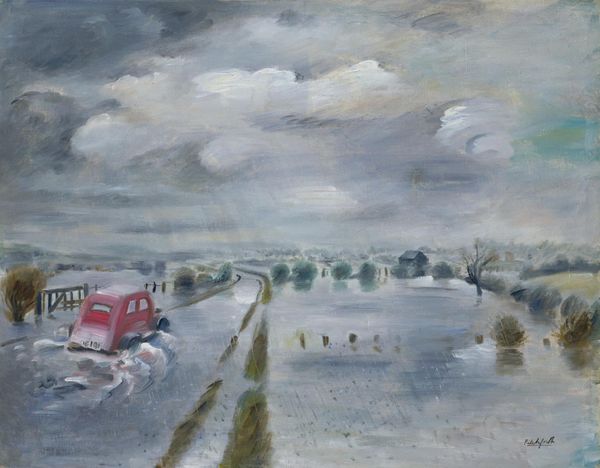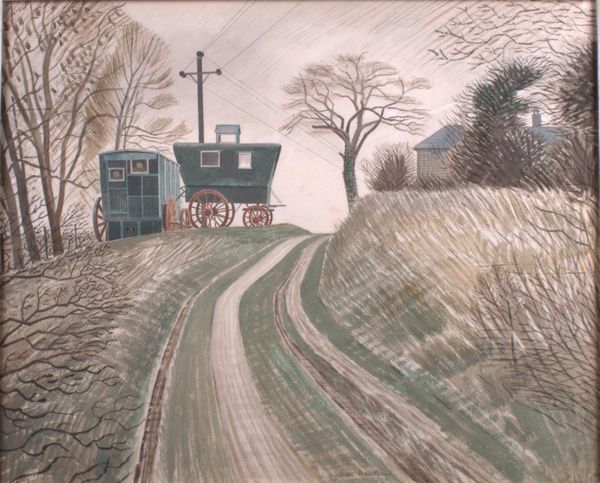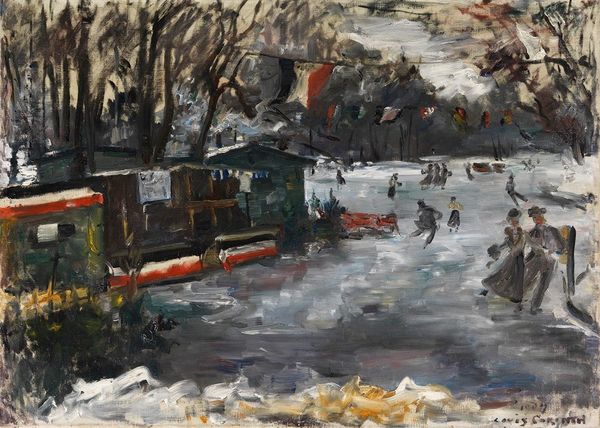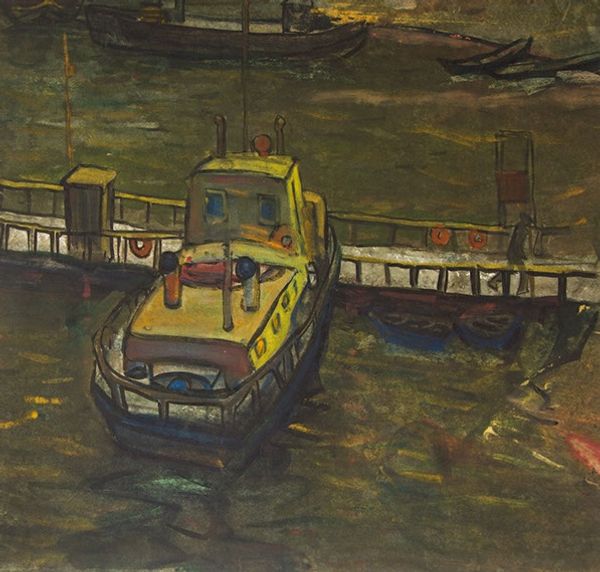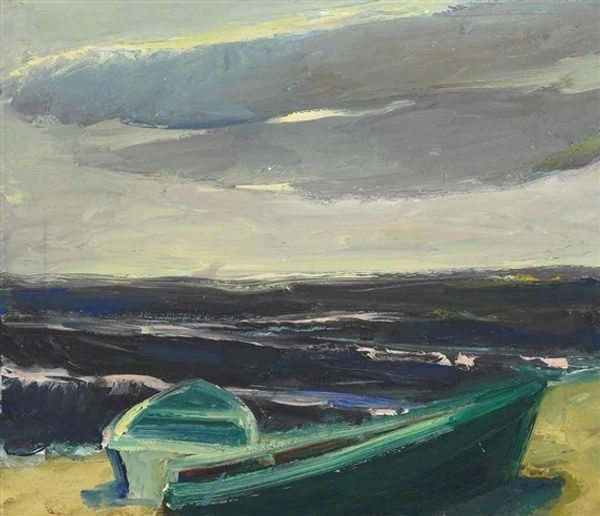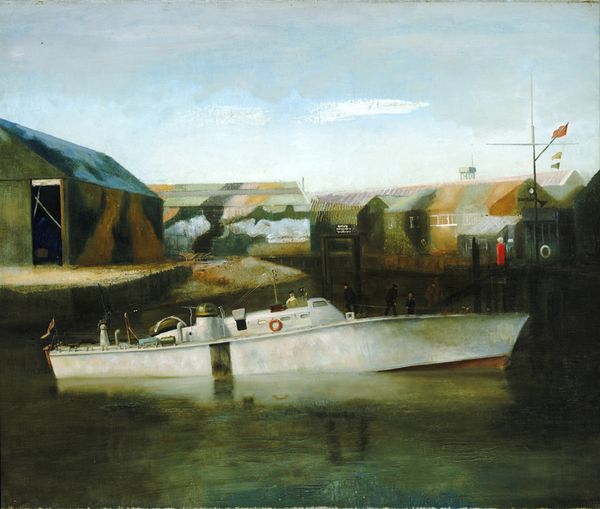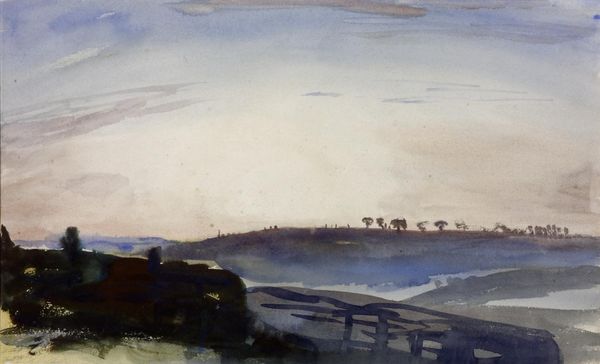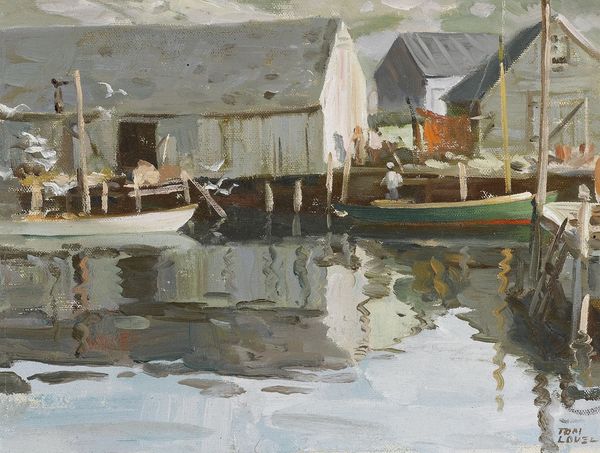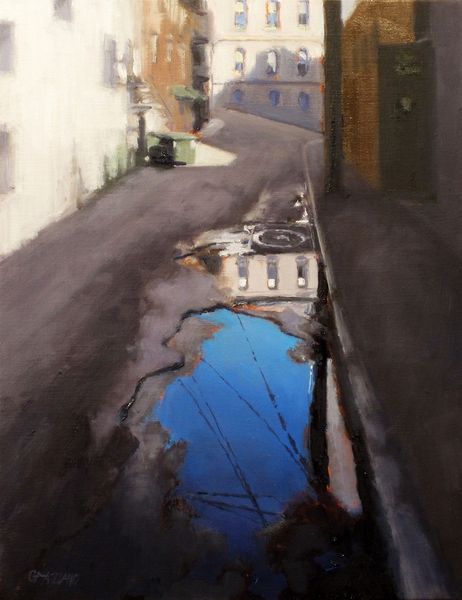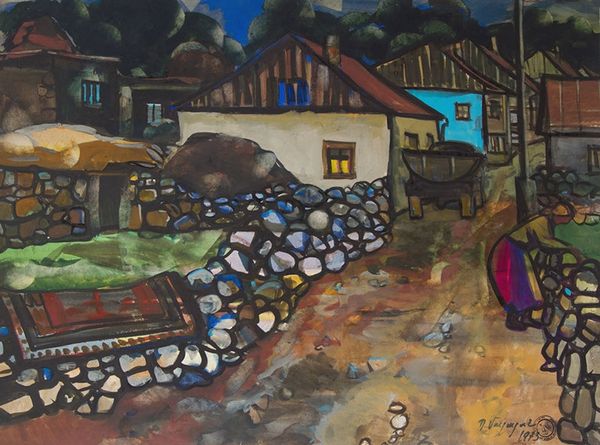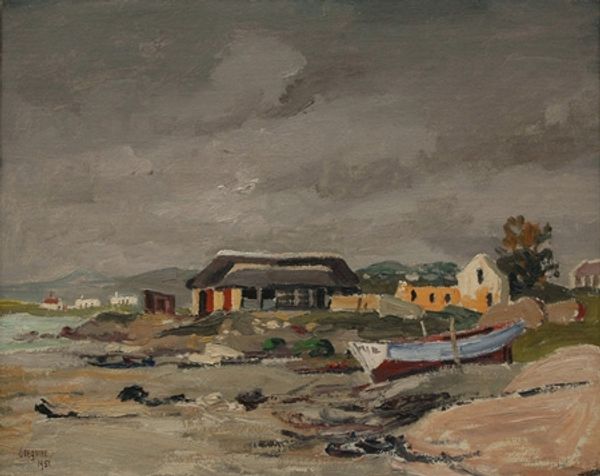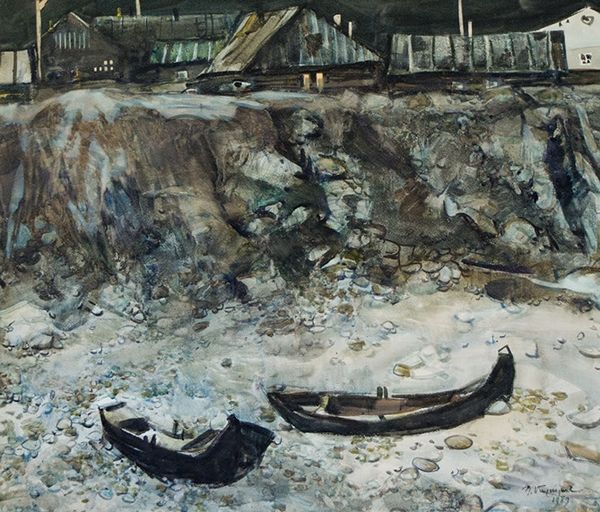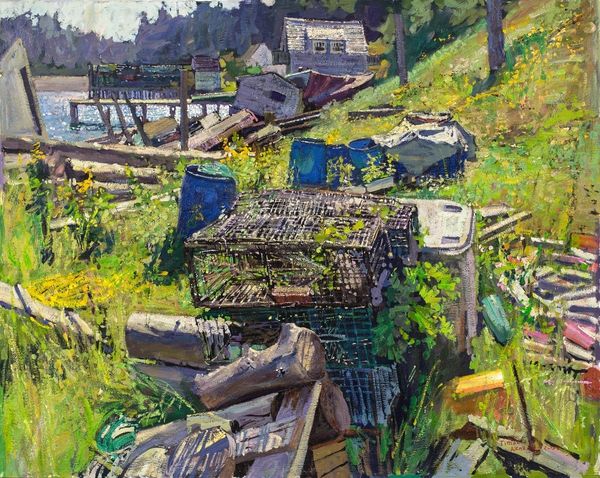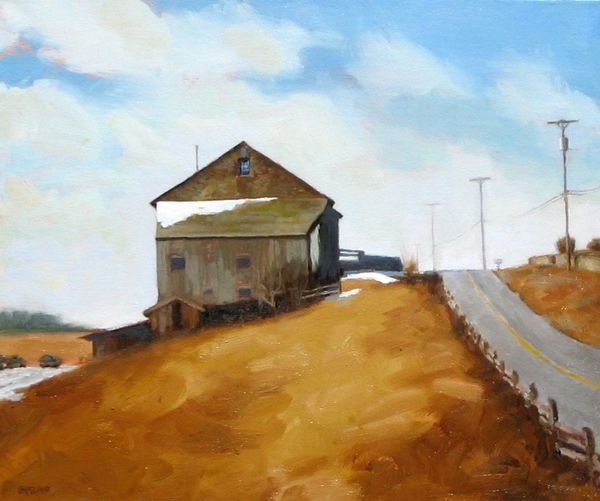
Dimensions: support: 508 x 762 mm
Copyright: © Tate | CC-BY-NC-ND 4.0 DEED, Photo: Tate
Curator: This painting, held in the Tate Collections, is called "Night Transport" by Roland Vivian Pitchforth. Editor: It strikes me as a landscape of industrial activity viewed through a lens of precarity. The shadows are so heavy. Curator: Indeed. Pitchforth, born in 1895, lived through immense shifts in the cultural status of labor and machinery. I see this painting as a record of those shifts. Editor: The gendered implications of the shadows feel pronounced, the implication of labor performed in obscured conditions. The "POOL" emblazoned on the fuel truck suggests a network of shared risk, though the benefits are not necessarily shared equally. Curator: Well, the government's "pool" petrol scheme, was about the rationing of resources, ensuring accessibility during wartime. Editor: Rationing always implies a socio-economic hierarchy, a stratification of who has access. Even that little rabbit running across the road seems to understand the stakes. Curator: An intriguing read. The painting certainly invites many levels of interpretation. Editor: Absolutely. It is an invitation to consider labor, and the undercurrents of our shared societal burdens.
Comments
tate 3 months ago
⋮
http://www.tate.org.uk/art/artworks/pitchforth-night-transport-n05173
Join the conversation
Join millions of artists and users on Artera today and experience the ultimate creative platform.
tate 3 months ago
⋮
The charms of the interwar countryside were much advertised by petrol companies such as Shell. Yet the increasingly busy roads that made rural excursions possible were generally not part of the attraction. Roland Pitchforth noted ‘I had been interested in this type of subject for about 3 years previously... going out many evenings under similar conditions observing lorries and petrol wagons etc.’ ‘Pool’ was a wartime government scheme in which the various petrol companies worked together. It would survive into the early 1950s, longer than Pitchforth’s rabbit. Gallery label, May 2003
